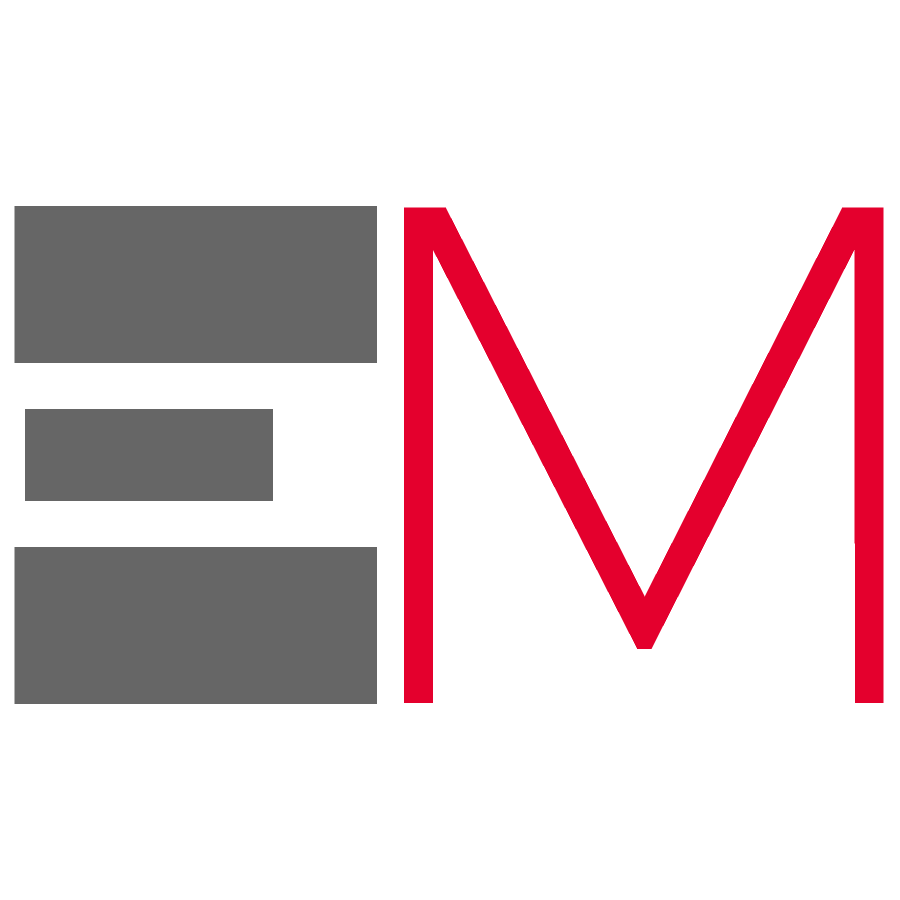
Automated UV-C Sterilizers
MADE IN SLOVENIA
ENGINEERED by a SLOVENIAN - SWISS and ITALIAN Partnership
MADE IN SLOVENIA
ENGINEERED by a SLOVENIAN - SWISS and ITALIAN Partnership
STERILISATION Machine Line Dedicated to COVID-19
Engmotion Steril-ONE line incorporates a series of devices dedicated to sterilizing sensitive sites through Ultra-Violet Germicidal Irradiation (UVGI) technology of short-wave UV-C ultraviolet radiation.
The International Ultraviolet Association (IUVA) believes that UV disinfection technologies can play a role in a multiple barrier approach to reducing the transmission of the virus causing COVID-19, SARS-CoV-2, based on current disinfection data and empirical evidence - see new dedicated webpage: http://www.iuva.org/COVID-19.
The same evaluation comes from The American Society of Heating, Refrigerating and Air-Conditioning Engineers (ASHRAE), that recommends ultraviolet germicidal irradiation as a strategy for dealing with the transmission of COVID-19 disease (ASHRAE 2020).
The International Ultraviolet Association (IUVA) believes that UV disinfection technologies can play a role in a multiple barrier approach to reducing the transmission of the virus causing COVID-19, SARS-CoV-2, based on current disinfection data and empirical evidence - see new dedicated webpage: http://www.iuva.org/COVID-19.
The same evaluation comes from The American Society of Heating, Refrigerating and Air-Conditioning Engineers (ASHRAE), that recommends ultraviolet germicidal irradiation as a strategy for dealing with the transmission of COVID-19 disease (ASHRAE 2020).
SANITIZATION TARGETS
Sanitization environments: hospitals, big environments, structured companies
Sanitization environments: small or medium-sized companies, offices, restaurants with few architectural barriers.
Sanitization environments: Specifically designed for helicopter cabins. Optional use: Ambulances,
Sanitization environments: Family houses, apartments
Sanitization environments: - Emergency rooms, hospitals, medical clinics, operating rooms, residences for the elderly, NEW TECHNOLOGY
UVC Technical Data, Literature and Great Competitors!
UVC Technical Data, Additional Info and related specifications
UVC Relevant Literature References for Robotics applications
Competitors brief review
UVC FAR Technical Data
Steril-ONE A-Robot
Sanitization environments: hospitals, big environments, structured companies, without too many architectural barriers.
Need: minimal human intervention, maximum sanitization control, high speed sanitization.
Steril-ONE A-Robot is the most complete, stand-alone and powerful device in the Steril-ONE line by Engmotion.
Steril-One A-Robot is a fully stand-alone machine with a sanitization system consisting of 4 UVC germicide lamps, at 254 nm. The lamps do not emit ozone, thus not requiring a subsequent aeration of the room.
The lamps have a sterilization efficiency of 99.9%. The sanitization time varies between 8 and 15 minutes depending on the room to be sanitized, the space volume is automatically calculated by the intelligent system on board of the machine.
The device is managed by a smart tablet PC, managed by an operator.
The system is equipped with an autonomous mobile robot base (AMR) designed to optimize productivity in logistics and production operations. The AMR unit works safely with people and avoids static and dynamic obstacles. In addition, it is able to choose the most efficient route and, if necessary, automatically calculate alternative routes, compared to the work path you set.
The machine is equipped with a human presence recognition system and an acoustic warning for the decontamination cycle start. It can also identify closed containment doors, if the security management system allows.
Included WiFi IoT, allows remote control and monitoring of the device, as well as for remote programming of routes and activation times.
SAFETY FEATURES
- 360 °motion detectors. In case of motion detection during the disinfection cycle, the UVC lamps are switched off immediately.
- Adjustable sterilization start delay
- Emergency stop button
- LEDs indicating device status
____________________________________
The Steril-ONE A-Robot device can have the following configurations:
- 22 Ah Battery (about 8 hours of battery life with 4 lamps configuration) or 11 Ah battery (about 8 hours of battery life with 4 lamps configuration)
- Variable number of lamps ranging from 4 to 8
GO TO THE Steril-ONE Device REQUEST FORM
Need: minimal human intervention, maximum sanitization control, high speed sanitization.
Steril-ONE A-Robot is the most complete, stand-alone and powerful device in the Steril-ONE line by Engmotion.
Steril-One A-Robot is a fully stand-alone machine with a sanitization system consisting of 4 UVC germicide lamps, at 254 nm. The lamps do not emit ozone, thus not requiring a subsequent aeration of the room.
The lamps have a sterilization efficiency of 99.9%. The sanitization time varies between 8 and 15 minutes depending on the room to be sanitized, the space volume is automatically calculated by the intelligent system on board of the machine.
The device is managed by a smart tablet PC, managed by an operator.
The system is equipped with an autonomous mobile robot base (AMR) designed to optimize productivity in logistics and production operations. The AMR unit works safely with people and avoids static and dynamic obstacles. In addition, it is able to choose the most efficient route and, if necessary, automatically calculate alternative routes, compared to the work path you set.
The machine is equipped with a human presence recognition system and an acoustic warning for the decontamination cycle start. It can also identify closed containment doors, if the security management system allows.
Included WiFi IoT, allows remote control and monitoring of the device, as well as for remote programming of routes and activation times.
SAFETY FEATURES
- 360 °motion detectors. In case of motion detection during the disinfection cycle, the UVC lamps are switched off immediately.
- Adjustable sterilization start delay
- Emergency stop button
- LEDs indicating device status
____________________________________
The Steril-ONE A-Robot device can have the following configurations:
- 22 Ah Battery (about 8 hours of battery life with 4 lamps configuration) or 11 Ah battery (about 8 hours of battery life with 4 lamps configuration)
- Variable number of lamps ranging from 4 to 8
GO TO THE Steril-ONE Device REQUEST FORM
Steril-ONE S-Robot
Sanitization environments: hospital rooms, nursing homes, dental offices, companies without too many architectural barriers.
Need: rapid execution of sanitization.
Steril-ONE S-Robot is a hand-held device with a high sanitizing power
The Steril-one S-Robot is portable manually with a sanitizing system consisting of 4 UVC germicidal lamps, at 254 nm. The lamps do not emit ozone, thus not requiring a subsequent aeration of the room.
The lamps have a sterilization efficiency of 99.9%. The sanitization time varies between 8 and 20 minutes depending on the room to be sanitized, the space volume is automatically calculated by the intelligent system on board of the machine.
The device is operated by a smart tablet PC, managed by an operator.
The machine is equipped with a human presence recognition system and an acoustic warning for the decontamination cycle start. It can also identify closed containment doors, if the security management system allows.
Included WiFi IoT, allows remote control and monitoring of the device, as well as for remote programming of routes and activation times.
SAFETY FEATURES
- 360 °motion detectors. In case of motion detection during the disinfection cycle, the UVC lamps are switched off immediately.
- Adjustable sterilization start delay
- Emergency stop button
- LEDs indicating device status
____________________________________
The Steril-ONE S-Robot device can have the following configurations:
- Battery-less version to be directly connected to the mains line
- 22 Ah Battery (about 8 hours of battery life with 8 lamps configuration)
Sanitization environments: hospital rooms, nursing homes, companies without too many architectural barriers.
Need: rapid execution of sanitization.
Steril-ONE S-Robot is a hand-held device with a high sanitizing power
EN Brochure - IT Brochure - Slo Brochure
GO TO THE Steril-ONE Device REQUEST FORM
Need: rapid execution of sanitization.
Steril-ONE S-Robot is a hand-held device with a high sanitizing power
The Steril-one S-Robot is portable manually with a sanitizing system consisting of 4 UVC germicidal lamps, at 254 nm. The lamps do not emit ozone, thus not requiring a subsequent aeration of the room.
The lamps have a sterilization efficiency of 99.9%. The sanitization time varies between 8 and 20 minutes depending on the room to be sanitized, the space volume is automatically calculated by the intelligent system on board of the machine.
The device is operated by a smart tablet PC, managed by an operator.
The machine is equipped with a human presence recognition system and an acoustic warning for the decontamination cycle start. It can also identify closed containment doors, if the security management system allows.
Included WiFi IoT, allows remote control and monitoring of the device, as well as for remote programming of routes and activation times.
SAFETY FEATURES
- 360 °motion detectors. In case of motion detection during the disinfection cycle, the UVC lamps are switched off immediately.
- Adjustable sterilization start delay
- Emergency stop button
- LEDs indicating device status
____________________________________
The Steril-ONE S-Robot device can have the following configurations:
- Battery-less version to be directly connected to the mains line
- 22 Ah Battery (about 8 hours of battery life with 8 lamps configuration)
Sanitization environments: hospital rooms, nursing homes, companies without too many architectural barriers.
Need: rapid execution of sanitization.
Steril-ONE S-Robot is a hand-held device with a high sanitizing power
EN Brochure - IT Brochure - Slo Brochure
GO TO THE Steril-ONE Device REQUEST FORM
Steril-ONE MULTI S-Robot
Multi-S Model: Disinfectors shall include WiFi for combo-working. Strategy to speed up the process
Steril-ONE Amini-Robot
Sanitization environments: small or medium-sized companies, offices, restaurants with few architectural barriers.
Need: minimum human intervention, maximum control of sanitization.
Steril-ONE Amini-Robot is a very advanced device, which can cover the needs of many structures and work autonomously
Steril-one Amini-Robot is an almost totally autonomous machine with on board a sanitizing system composed of 2 germicidal lamps UVC, 254 nm. The lamps do not emit ozone, thus not requiring a subsequent aeration of the room.
The lamps have a sterilization efficiency of 99.9%. The sanitization time varies between 15 and 30 minutes depending on the room to be sanitized.
The device is operated by a smart tablet PC, managed by an operator.
The system is equipped with an autonomous robot mobile base designed to follow preset routes.
The mobile unit avoids static and dynamic obstacles.
The machine is equipped with a human presence recognition system and an acoustic warning for the decontamination cycle start.
Included WiFi IoT, allows remote control and monitoring of the device, as well as for remote programming of routes and activation times.
SAFETY FEATURES
- 360 °motion detectors. In case of motion detection during the disinfection cycle, the UVC lamps are switched off immediately.
- Adjustable sterilization start delay
- Emergency stop button
- LEDs indicating device status
____________________________________
The Steril-ONE Amini-Robot device can have the following configurations:
- 5,5 Ah or 11 Ah battery
- Optional separable germicidal unit
GO TO THE Steril-ONE Device REQUEST FORM
Need: minimum human intervention, maximum control of sanitization.
Steril-ONE Amini-Robot is a very advanced device, which can cover the needs of many structures and work autonomously
Steril-one Amini-Robot is an almost totally autonomous machine with on board a sanitizing system composed of 2 germicidal lamps UVC, 254 nm. The lamps do not emit ozone, thus not requiring a subsequent aeration of the room.
The lamps have a sterilization efficiency of 99.9%. The sanitization time varies between 15 and 30 minutes depending on the room to be sanitized.
The device is operated by a smart tablet PC, managed by an operator.
The system is equipped with an autonomous robot mobile base designed to follow preset routes.
The mobile unit avoids static and dynamic obstacles.
The machine is equipped with a human presence recognition system and an acoustic warning for the decontamination cycle start.
Included WiFi IoT, allows remote control and monitoring of the device, as well as for remote programming of routes and activation times.
SAFETY FEATURES
- 360 °motion detectors. In case of motion detection during the disinfection cycle, the UVC lamps are switched off immediately.
- Adjustable sterilization start delay
- Emergency stop button
- LEDs indicating device status
____________________________________
The Steril-ONE Amini-Robot device can have the following configurations:
- 5,5 Ah or 11 Ah battery
- Optional separable germicidal unit
GO TO THE Steril-ONE Device REQUEST FORM
Steril-ONE Smini-Robot
Sanitization environments: offices or spaces of small or medium size with few architectural barriers.
Need: sanitization control.
Steril-ONE Smini-Robot is an advanced device, which can satisfy the needs of many facilities with needing offices or medium-sized spaces sanitization.
The Steril-one S-Robot is portable manually with a sanitizing system consisting of 2 UVC germicidal lamps, at 254 nm. The lamps do not emit ozone, thus not requiring a subsequent aeration of the room.
The lamps have a sterilization efficiency of 99.9%. The sanitization time varies between 15 and 30 minutes depending on the room to be sanitized.
The device is operated by a smart tablet PC, managed by an operator.
The machine is equipped with a human presence recognition system and an acoustic warning for the decontamination cycle start.
Included WiFi IoT, allows remote control and monitoring of the device, as well as for remote programming of activation times.
SAFETY FEATURES
- 360 °motion detectors. In case of motion detection during the disinfection cycle, the UVC lamps are switched off immediately.
- Adjustable sterilization start delay
- Emergency stop button
- LEDs indicating device status
____________________________________
The device Steril-ONE Smini- can have the following configurations:
- 5,5 Ah or 11 Ah battery
- Optional separable germicidal unit
- Battery-less version to be directly connected to the mains line
GO TO THE Steril-ONE Device REQUEST FORM
Need: sanitization control.
Steril-ONE Smini-Robot is an advanced device, which can satisfy the needs of many facilities with needing offices or medium-sized spaces sanitization.
The Steril-one S-Robot is portable manually with a sanitizing system consisting of 2 UVC germicidal lamps, at 254 nm. The lamps do not emit ozone, thus not requiring a subsequent aeration of the room.
The lamps have a sterilization efficiency of 99.9%. The sanitization time varies between 15 and 30 minutes depending on the room to be sanitized.
The device is operated by a smart tablet PC, managed by an operator.
The machine is equipped with a human presence recognition system and an acoustic warning for the decontamination cycle start.
Included WiFi IoT, allows remote control and monitoring of the device, as well as for remote programming of activation times.
SAFETY FEATURES
- 360 °motion detectors. In case of motion detection during the disinfection cycle, the UVC lamps are switched off immediately.
- Adjustable sterilization start delay
- Emergency stop button
- LEDs indicating device status
____________________________________
The device Steril-ONE Smini- can have the following configurations:
- 5,5 Ah or 11 Ah battery
- Optional separable germicidal unit
- Battery-less version to be directly connected to the mains line
GO TO THE Steril-ONE Device REQUEST FORM
Steril-ONE HELI-Robot
Sanitization environments: Specifically designed for helicopter cabins. Optional use: Ambulances,
Need: sanitization control, portability, high resistance, compactness
Steril-ONE Heli-Robot is an advanced device, which is specifically design for use in helicopter's cabins. It is ease to move, very simple to use, it has a special resistant structure and it is compact.
The Steril-one Heli-Robot is portable manually with a sanitizing system consisting of 2 special and compact UVC germicidal lamps, at 254 nm. The lamps do not emit ozone, thus not requiring a subsequent aeration of the room.
The lamps have a sterilization efficiency of 99.9%. The sanitization time varies between 5 and 15 minutes depending on the cabin to be sanitized.
The device is operated by a smart tablet PC, managed by an operator or directly on board.
The machine is equipped with a human presence recognition system and an acoustic warning for the decontamination cycle start.
Included WiFi IoT, allows remote control and monitoring of the device, as well as for remote programming of activation times.
SAFETY FEATURES
- 360 °motion detectors. In case of motion detection during the disinfection cycle, the UVC lamps are switched off immediately.
- Adjustable sterilization start delay
- Emergency stop button
- LEDs indicating device status
GO TO THE Steril-ONE Device REQUEST FORM
Need: sanitization control, portability, high resistance, compactness
Steril-ONE Heli-Robot is an advanced device, which is specifically design for use in helicopter's cabins. It is ease to move, very simple to use, it has a special resistant structure and it is compact.
The Steril-one Heli-Robot is portable manually with a sanitizing system consisting of 2 special and compact UVC germicidal lamps, at 254 nm. The lamps do not emit ozone, thus not requiring a subsequent aeration of the room.
The lamps have a sterilization efficiency of 99.9%. The sanitization time varies between 5 and 15 minutes depending on the cabin to be sanitized.
The device is operated by a smart tablet PC, managed by an operator or directly on board.
The machine is equipped with a human presence recognition system and an acoustic warning for the decontamination cycle start.
Included WiFi IoT, allows remote control and monitoring of the device, as well as for remote programming of activation times.
SAFETY FEATURES
- 360 °motion detectors. In case of motion detection during the disinfection cycle, the UVC lamps are switched off immediately.
- Adjustable sterilization start delay
- Emergency stop button
- LEDs indicating device status
GO TO THE Steril-ONE Device REQUEST FORM
Steril-ONE HOME-Robot
Sanitization environments: Family houses, apartments - home user.
Need: sanitization control, portability, compactness, design
Steril-ONE Pers-Robot is an advanced device, which is specifically design for everyday use in every family environment. It is ease to move, very simple to use, very compact.
The Steril-one Pers-Robot is portable manually with a sanitizing system consisting of 2 special and compact UVC germicidal lamps, at 254 nm. The lamps do not emit ozone, thus not requiring a subsequent aeration of the room.
The lamps have a sterilization efficiency of 99.9%. The sanitization time varies between 10 and 30 minutes depending on the room to be sanitized.
The device is operated by a smart tablet PC, managed by an operator or directly on board.
The machine is equipped with a human presence recognition system and an acoustic warning for the decontamination cycle start.
Included WiFi IoT, allows remote control and monitoring of the device, as well as for remote programming of activation times.
SAFETY FEATURES
- 360 °motion detectors. In case of motion detection during the disinfection cycle, the UVC lamps are switched off immediately.
- Adjustable sterilization start delay
- Emergency stop button
- LEDs indicating device status
GO TO THE Steril-ONE Device REQUEST FORM
Need: sanitization control, portability, compactness, design
Steril-ONE Pers-Robot is an advanced device, which is specifically design for everyday use in every family environment. It is ease to move, very simple to use, very compact.
The Steril-one Pers-Robot is portable manually with a sanitizing system consisting of 2 special and compact UVC germicidal lamps, at 254 nm. The lamps do not emit ozone, thus not requiring a subsequent aeration of the room.
The lamps have a sterilization efficiency of 99.9%. The sanitization time varies between 10 and 30 minutes depending on the room to be sanitized.
The device is operated by a smart tablet PC, managed by an operator or directly on board.
The machine is equipped with a human presence recognition system and an acoustic warning for the decontamination cycle start.
Included WiFi IoT, allows remote control and monitoring of the device, as well as for remote programming of activation times.
SAFETY FEATURES
- 360 °motion detectors. In case of motion detection during the disinfection cycle, the UVC lamps are switched off immediately.
- Adjustable sterilization start delay
- Emergency stop button
- LEDs indicating device status
GO TO THE Steril-ONE Device REQUEST FORM
Steril-ONE ALWAYS-Robot
Sanitization environments: - Emergency rooms, hospitals, clinics and medical clinics, operating rooms, ambulances, protected residences for the elderly, multi-functional residences, RSA, dormitories
Need: 24 h sanitization control, portability, autonomy
Steril-ONE Always-Robot is the utmost advanced device for autonomous sanitization.
It uses latest technologies, currently under testing. UVC Far 222nm Technology
It will available not before late 2020.
Stay tuned. Engmotion is working for the most sensitive targets to be sanitized.
GO TO THE Steril-ONE Device REQUEST FORM
Need: 24 h sanitization control, portability, autonomy
Steril-ONE Always-Robot is the utmost advanced device for autonomous sanitization.
It uses latest technologies, currently under testing. UVC Far 222nm Technology
It will available not before late 2020.
Stay tuned. Engmotion is working for the most sensitive targets to be sanitized.
GO TO THE Steril-ONE Device REQUEST FORM
UVC - TECNICAL DATA
UV-C - TECNICAL DATA (1)
For many years, ultraviolet (UV) germicidal lamps have been used for disinfection of air and surfaces within hospitals, care homes, laboratories and many other organisations where hygiene and cleanliness are of utmost importance. UV lamps are a proven technology when it comes to reducing bacteria, viruses and other harmful microorganisms that pose a risk to human health.
In light of the current Coronavirus outbreak, UV is one of the many technologies available and being utilised to help reduce and control the spread and it has been valued as a performing one
see International UltraViolet Association (IUVA) article and UV air and surface treatment recommendation from The American Society of Heating, Refrigerating and Air-Conditioning Engineers (ASHRAE)
What is UV?
Ultraviolet (UV) light is part of the electromagnetic spectrum. UV is further divided into three wavelength ranges:
UV-A (near UV) - from 315 nm to 400 nm
UV-B (middle UV) - from 280 nm to 315 nm
UV-C (far UV) - from 180 nm to 280 nm
VUV (vacuum UV) – from 10 to 180 nm
UV-A radiations are easily transmitted through air and glass; they penetrate through the epidermis and the anterior ocular media. (NEHC 1992; Int. UV. Association FAQs)
UV-B and UV-C are transmitted through air and quartz, but absorbed by ordinary glass. These wavelengths are also absorbed by the ozone layer of the upper atmosphere and generally do not reach the earth's surface. UV radiation below 315 nm is primarily absorbed by the cornea or by the top epithelial skin layer. (NEHC 1992; Int. UV. Association FAQs)
Radiations with wavelengths from 10 nm to 180 nm are sometimes referred to as "vacuum" or "extreme" UV. These wavelengths are not transmitted through air; thus, biological studies on this UV range are of little concern. (NEHC 1992; Int. UV. Association FAQs)
Among UV wavelength ranges, UV-C has the best potential ability to inactivate microorganisms because the wavelength 250-270 nm is strongly and mainly absorbed by the nucleic acids. (Yin 2013)
UV-C lights germicidal function is largely due to the result of thymine dimers formation, which inactivate the microorganism's DNA or RNA, leaving them unable to perform vital cellular functions. (Chanprakon 2019; Spencer 2017; Gostine 2016; Ultraviolet germicidal irradiation handbook 2010; Cutler 2011; CIE 2003).
Most commercial UV-C lamps are low-pressure mercury lamps that emit UV energy at 253.7 nm, very close to the optimal wavelength.
What are the beneficial uses of germicidal UV?
UV germicidal technology is a non-chemical approach to disinfection. In this method, no chemical agent is added to the space/room to be disinfected, which makes this process safe, simple, and inexpensive; moreover, it requires very low maintenance. UV sanitizers utilize germicidal lamps that are designed to give a certain dosage of UV radiation. The germicidal exposure dose is a function of the UV irradiance multiplied by the exposure time; you must have a certain amount of both for a successful design.
Here are just a few of the applications…
Warnings in case of UVC light high exposure
UV-C radiation is a low-penetrating form of UV as compared to UV-A or UV-B radiation. Measurements on human tissue show that the amount of UV-C transmitted through the epidermis is minimal (Diffey 1983; Bruls 1984]
Nonetheless, UV-C radiation is invisible to humans and exposure to U-VC radiation may have an effect on health, in particular on eye and skin (International Organization for Standardization 2016).
Currently available data do not allow to assess quantitative the risk of cancer associate to UV-C lamps exposure. The attenuation provided by the stratum corneum and epithelial tissues of the skin greatly should reduce carcinogenic risk; however, UV-C can be capable of inducing skin cancer in humans (SCHEER 2017)
Precautions are recommended when using UV-C light devices. Warning signs should be placed in certain locations to protect personnel or passersby from UV hazards. Appropriate locations include access doors, air-handling unit outside walls, equipment room doors, etc.
The EU health agency's safety guidelines on the use of UVC- sources can be found here.
Eye damage can result in photokeratitis and photokeratoconjunctivitis. Symptoms can include an abrupt sensation comparable to sand in eyes , tearing, and eye pain. Such symptoms may appear within 1-12 h after exposure and resolve fully within 24-48 h. Acute overexposure to UV-C radiation may cause incapacity due to eye discomfort, but this generally regresses after several days, leaving no permanent damage. Cutaneous damage consists of erythema, a reddening of the skin similar to sunburn. The maximum effect of erythema occurs at a wavelength of 297 nm (therefore, in the UV-B band). UV-C radiation at a wavelength of 254 nm is less effective in causing erythema (CIE 2010, International Organization for Standardization 2016)
So are UVC devices safe?
Like any disinfection system, UV-C devices must be used in a proper way. Some devices also produce ozone as part of their cycle, others produce light and heat like an arc welder, others move during their cycles. Hence, general machine-human safety needs to be considered with all disinfection devices, and these considerations should be addressed in the operating manual, in the user training, and appropriate safety compliance.
The International Commission on Illumination (CIE) completed a review of UV-C photocarcinogenesis risks from germicidal lamps. They concluded that overexposure to UV-C radiation include transient corneal and conjunctival irritation and skin irritation (erythema), disappearing within 24–48 hours. UV-C radiation is not currently known to produce lasting biological damage. The attenuation provided by the stratum corneum and epithelial tissues of the skin greatly should reduce carcinogenic risk; however, according to European Commission Scientific Committee on Health, Environmental and Emerging Risks, UV-C are capable of inducing skin cancer in humans. Currently available data do not allow to assess quantitative the risk of cancer associate to UV-C lamps exposure. Ozone may also be produced from UV-C lamps emitting wavelengths shorter than 240 nm. Exposure to ozone, above threshold levels, presents a risk of a variety of symptoms and diseases associated with the respiratory tract, particularly in sensitive individuals
_________________________________________________________
UV-C Photodegradation of Materials
The UV-C energy used in HVAC applications can be detrimental to organic materials. If the UV is not applied properly and vulnerable materials are not shielded or substituted, substantial degradation can occur, resulting in decreased filtration efficiency, defective seals, and damaged system components, causing a possible loss in system performance and/or potential safety concerns (2016 ASHRAE Handbook; Kauffman 2010; NEHC 1992)
The extent of material degradation caused by UV-C energy varies greatly with the material, UV intensity, length of exposure and design of the component. The effects of UV on materials are dose-dependent, as they are for microorganisms (Kowalski 2009).
Short-term UVC exposures (1000–11000 μW/cm2 irradiance level range) were performed by Kauffman (Kauffman 2010). Based on the relative degradation of the tested samples, the materials were ranked in four categories with respect to the UV-C resistance as follows:
(A) No effect (inorganic materials only; all organic materials exhibit some degradation)
(B) Minor effect (mainly cosmetic changes, not likely to affect materials ability to perform its duty)
(C) Moderate effect (some cracking/pitting suggesting protection/shielding should be considered)
(D) Severe effect (structural damage, not recommended)
Nevertheless, these damages were observed only after days or weeks of exposure at irradiances > 1000 μW/cm2. For a lower irradiance range (50–1000 μW/cm2) very long exposure time (months) are required to substantially damage materials (Wolf 2017)
Some common polymers such as PE show signs of degradation at UV doses (10-100 J/cm2) that are several hundred or even thousand time higher than that required to inactivate microorganisms (Kaczmarek 2006)
With limited time applications such as the case of UV-C sanitizer robots, the material photodegradation is not that critical. It can effect only very thin materials.
For many years, ultraviolet (UV) germicidal lamps have been used for disinfection of air and surfaces within hospitals, care homes, laboratories and many other organisations where hygiene and cleanliness are of utmost importance. UV lamps are a proven technology when it comes to reducing bacteria, viruses and other harmful microorganisms that pose a risk to human health.
In light of the current Coronavirus outbreak, UV is one of the many technologies available and being utilised to help reduce and control the spread and it has been valued as a performing one
see International UltraViolet Association (IUVA) article and UV air and surface treatment recommendation from The American Society of Heating, Refrigerating and Air-Conditioning Engineers (ASHRAE)
What is UV?
Ultraviolet (UV) light is part of the electromagnetic spectrum. UV is further divided into three wavelength ranges:
UV-A (near UV) - from 315 nm to 400 nm
UV-B (middle UV) - from 280 nm to 315 nm
UV-C (far UV) - from 180 nm to 280 nm
VUV (vacuum UV) – from 10 to 180 nm
UV-A radiations are easily transmitted through air and glass; they penetrate through the epidermis and the anterior ocular media. (NEHC 1992; Int. UV. Association FAQs)
UV-B and UV-C are transmitted through air and quartz, but absorbed by ordinary glass. These wavelengths are also absorbed by the ozone layer of the upper atmosphere and generally do not reach the earth's surface. UV radiation below 315 nm is primarily absorbed by the cornea or by the top epithelial skin layer. (NEHC 1992; Int. UV. Association FAQs)
Radiations with wavelengths from 10 nm to 180 nm are sometimes referred to as "vacuum" or "extreme" UV. These wavelengths are not transmitted through air; thus, biological studies on this UV range are of little concern. (NEHC 1992; Int. UV. Association FAQs)
Among UV wavelength ranges, UV-C has the best potential ability to inactivate microorganisms because the wavelength 250-270 nm is strongly and mainly absorbed by the nucleic acids. (Yin 2013)
UV-C lights germicidal function is largely due to the result of thymine dimers formation, which inactivate the microorganism's DNA or RNA, leaving them unable to perform vital cellular functions. (Chanprakon 2019; Spencer 2017; Gostine 2016; Ultraviolet germicidal irradiation handbook 2010; Cutler 2011; CIE 2003).
Most commercial UV-C lamps are low-pressure mercury lamps that emit UV energy at 253.7 nm, very close to the optimal wavelength.
What are the beneficial uses of germicidal UV?
UV germicidal technology is a non-chemical approach to disinfection. In this method, no chemical agent is added to the space/room to be disinfected, which makes this process safe, simple, and inexpensive; moreover, it requires very low maintenance. UV sanitizers utilize germicidal lamps that are designed to give a certain dosage of UV radiation. The germicidal exposure dose is a function of the UV irradiance multiplied by the exposure time; you must have a certain amount of both for a successful design.
Here are just a few of the applications…
- Drinking Water
- Airstream disinfection
- Food Processing
- Medical (see Engmotion's application in automation for syringe filling machines or citostatics and antibiotics preparation machines)
- Industries
Warnings in case of UVC light high exposure
UV-C radiation is a low-penetrating form of UV as compared to UV-A or UV-B radiation. Measurements on human tissue show that the amount of UV-C transmitted through the epidermis is minimal (Diffey 1983; Bruls 1984]
Nonetheless, UV-C radiation is invisible to humans and exposure to U-VC radiation may have an effect on health, in particular on eye and skin (International Organization for Standardization 2016).
Currently available data do not allow to assess quantitative the risk of cancer associate to UV-C lamps exposure. The attenuation provided by the stratum corneum and epithelial tissues of the skin greatly should reduce carcinogenic risk; however, UV-C can be capable of inducing skin cancer in humans (SCHEER 2017)
Precautions are recommended when using UV-C light devices. Warning signs should be placed in certain locations to protect personnel or passersby from UV hazards. Appropriate locations include access doors, air-handling unit outside walls, equipment room doors, etc.
The EU health agency's safety guidelines on the use of UVC- sources can be found here.
Eye damage can result in photokeratitis and photokeratoconjunctivitis. Symptoms can include an abrupt sensation comparable to sand in eyes , tearing, and eye pain. Such symptoms may appear within 1-12 h after exposure and resolve fully within 24-48 h. Acute overexposure to UV-C radiation may cause incapacity due to eye discomfort, but this generally regresses after several days, leaving no permanent damage. Cutaneous damage consists of erythema, a reddening of the skin similar to sunburn. The maximum effect of erythema occurs at a wavelength of 297 nm (therefore, in the UV-B band). UV-C radiation at a wavelength of 254 nm is less effective in causing erythema (CIE 2010, International Organization for Standardization 2016)
So are UVC devices safe?
Like any disinfection system, UV-C devices must be used in a proper way. Some devices also produce ozone as part of their cycle, others produce light and heat like an arc welder, others move during their cycles. Hence, general machine-human safety needs to be considered with all disinfection devices, and these considerations should be addressed in the operating manual, in the user training, and appropriate safety compliance.
The International Commission on Illumination (CIE) completed a review of UV-C photocarcinogenesis risks from germicidal lamps. They concluded that overexposure to UV-C radiation include transient corneal and conjunctival irritation and skin irritation (erythema), disappearing within 24–48 hours. UV-C radiation is not currently known to produce lasting biological damage. The attenuation provided by the stratum corneum and epithelial tissues of the skin greatly should reduce carcinogenic risk; however, according to European Commission Scientific Committee on Health, Environmental and Emerging Risks, UV-C are capable of inducing skin cancer in humans. Currently available data do not allow to assess quantitative the risk of cancer associate to UV-C lamps exposure. Ozone may also be produced from UV-C lamps emitting wavelengths shorter than 240 nm. Exposure to ozone, above threshold levels, presents a risk of a variety of symptoms and diseases associated with the respiratory tract, particularly in sensitive individuals
_________________________________________________________
UV-C Photodegradation of Materials
The UV-C energy used in HVAC applications can be detrimental to organic materials. If the UV is not applied properly and vulnerable materials are not shielded or substituted, substantial degradation can occur, resulting in decreased filtration efficiency, defective seals, and damaged system components, causing a possible loss in system performance and/or potential safety concerns (2016 ASHRAE Handbook; Kauffman 2010; NEHC 1992)
The extent of material degradation caused by UV-C energy varies greatly with the material, UV intensity, length of exposure and design of the component. The effects of UV on materials are dose-dependent, as they are for microorganisms (Kowalski 2009).
Short-term UVC exposures (1000–11000 μW/cm2 irradiance level range) were performed by Kauffman (Kauffman 2010). Based on the relative degradation of the tested samples, the materials were ranked in four categories with respect to the UV-C resistance as follows:
(A) No effect (inorganic materials only; all organic materials exhibit some degradation)
(B) Minor effect (mainly cosmetic changes, not likely to affect materials ability to perform its duty)
(C) Moderate effect (some cracking/pitting suggesting protection/shielding should be considered)
(D) Severe effect (structural damage, not recommended)
Nevertheless, these damages were observed only after days or weeks of exposure at irradiances > 1000 μW/cm2. For a lower irradiance range (50–1000 μW/cm2) very long exposure time (months) are required to substantially damage materials (Wolf 2017)
Some common polymers such as PE show signs of degradation at UV doses (10-100 J/cm2) that are several hundred or even thousand time higher than that required to inactivate microorganisms (Kaczmarek 2006)
With limited time applications such as the case of UV-C sanitizer robots, the material photodegradation is not that critical. It can effect only very thin materials.
UVC - LITERATURE
UVC light has been used extensively for more than 40 years
Their use has been in disinfecting drinking water, waste water, air, pharmaceutical products, and surfaces against a whole suite of human pathogens (see Fluence UV Dose Required review IUVA).
All bacteria and viruses tested to date (many hundreds over the years, including other coronaviruses) respond to UV disinfection. Some organisms are more susceptible to UVC disinfection than others, but all tested so far do respond at the appropriate doses.
ECDC point prevalence survey of healthcare-associated infections and antimicrobial use in acute care hospitals; 2011 - 2012 point prevalence survey: https://ecdc.europa.eu/sites/portal/files/media/en/publications/Publications/healthcare-associated-infections-antimicrobial-use-PPS.pdf
A demonstrated point is that, thanks to UV-C machines usage in hospital, it has been demonstrated over 30% reduction of HAIs.
A clinical study, conducted on 36.000 patient-days, concluded that UV-C disinfection dramatically reduces HAIs (incidence difference, 1,3/1000 patient-days, a reduction of 34,2 %) - reference: Nathanael A. Napolitano MPH, Tanmay Mahapatra MBBS, Weiming Tang MD, PhD: The effectiveness of UV-C radiation for facility-wide environmental disinfection to reduce health care eacquired infections; American Journal of Infection Control 43 (2015) 1342-6.
A related study is the following: Carling PC, Parry MF, von Beheren SM; Healthcare Environmental Hygiene Study Group. Identifying opportunities to enhance environmental cleaning in 23 acute care hospitals. Infect Control Hosp Epidemiol 2008;29:1–7. Available on https://www.ncbi.nlm.nih.gov/pubmed/18171180.
Specific literature for best evaluation in choosing a UV-C Robot machine:
A model for choosing an automated ultraviolet-C disinfection system and building a case for the C-suite: Two case reports. (Spencer, Vignari, Bryce, Johnson, Fauerbach , Graham)
Related article to above issue: Evaluation of an automated ultraviolet radiation
device for decontamination of Clostridium difficile and other healthcare-associated pathogens in hospital rooms (Michelle M Nerandzic Jennifer L Cadnum, Michael J Pultz and Curtis J Donskey)
W. Kowalski, Ultraviolet Germicidal Irradiation Handbook, 17 DOI 10.1007/978-3-642-01999-9_2, C Springer-Verlag Berlin Heidelberg 2009.
A must to follow, for purifiers and UVC machine design: ASHRAE-Handbook-2020-HVAC-Systems-and-EquipmentIP
Additional misc. reference on safety applied to UVC:
Control of Artificial Optical Radiation at Work Regulations 2010 – Health and Safety Executive.
Artificial Optical Radiation Directive 2006/25/EC of the European Parliament and of the Council (of 5 April 2006). On the minimum health and safety requirements regarding the exposure of workers to risks arising from physical agents (artificial optical radiation) (19th individual Directive within the meaning of Article 16(1) of Directive 89/391/EEC).
The Management of Health & Safety at Work Regulations 1999.
Guidelines on limits of exposure to ultraviolet radiation of wavelengths between 180 nm and 400 nm (incoherent optical radiation). The International Commission on Non-Ionizing Radiation Protection, Health Physics, August 2004, Volume 87, Number 2.ICNIRP Statement – Protection of Workers against Ultraviolet Radiation – Health Physics, July 2010, Volume 99, Number 1.
'Safety First with UV Light' – Risk Management in the Workplace – Paul Jackson.
Fda guidelines for Sterilizers during Covid-19 Pandemia: https://www.fda.gov/media/136533/download
Last updates about UVC efficiency on COVID.19 : http://www.iuva.org/COVID-19
Their use has been in disinfecting drinking water, waste water, air, pharmaceutical products, and surfaces against a whole suite of human pathogens (see Fluence UV Dose Required review IUVA).
All bacteria and viruses tested to date (many hundreds over the years, including other coronaviruses) respond to UV disinfection. Some organisms are more susceptible to UVC disinfection than others, but all tested so far do respond at the appropriate doses.
ECDC point prevalence survey of healthcare-associated infections and antimicrobial use in acute care hospitals; 2011 - 2012 point prevalence survey: https://ecdc.europa.eu/sites/portal/files/media/en/publications/Publications/healthcare-associated-infections-antimicrobial-use-PPS.pdf
A demonstrated point is that, thanks to UV-C machines usage in hospital, it has been demonstrated over 30% reduction of HAIs.
A clinical study, conducted on 36.000 patient-days, concluded that UV-C disinfection dramatically reduces HAIs (incidence difference, 1,3/1000 patient-days, a reduction of 34,2 %) - reference: Nathanael A. Napolitano MPH, Tanmay Mahapatra MBBS, Weiming Tang MD, PhD: The effectiveness of UV-C radiation for facility-wide environmental disinfection to reduce health care eacquired infections; American Journal of Infection Control 43 (2015) 1342-6.
A related study is the following: Carling PC, Parry MF, von Beheren SM; Healthcare Environmental Hygiene Study Group. Identifying opportunities to enhance environmental cleaning in 23 acute care hospitals. Infect Control Hosp Epidemiol 2008;29:1–7. Available on https://www.ncbi.nlm.nih.gov/pubmed/18171180.
Specific literature for best evaluation in choosing a UV-C Robot machine:
A model for choosing an automated ultraviolet-C disinfection system and building a case for the C-suite: Two case reports. (Spencer, Vignari, Bryce, Johnson, Fauerbach , Graham)
Related article to above issue: Evaluation of an automated ultraviolet radiation
device for decontamination of Clostridium difficile and other healthcare-associated pathogens in hospital rooms (Michelle M Nerandzic Jennifer L Cadnum, Michael J Pultz and Curtis J Donskey)
W. Kowalski, Ultraviolet Germicidal Irradiation Handbook, 17 DOI 10.1007/978-3-642-01999-9_2, C Springer-Verlag Berlin Heidelberg 2009.
A must to follow, for purifiers and UVC machine design: ASHRAE-Handbook-2020-HVAC-Systems-and-EquipmentIP
Additional misc. reference on safety applied to UVC:
Control of Artificial Optical Radiation at Work Regulations 2010 – Health and Safety Executive.
Artificial Optical Radiation Directive 2006/25/EC of the European Parliament and of the Council (of 5 April 2006). On the minimum health and safety requirements regarding the exposure of workers to risks arising from physical agents (artificial optical radiation) (19th individual Directive within the meaning of Article 16(1) of Directive 89/391/EEC).
The Management of Health & Safety at Work Regulations 1999.
Guidelines on limits of exposure to ultraviolet radiation of wavelengths between 180 nm and 400 nm (incoherent optical radiation). The International Commission on Non-Ionizing Radiation Protection, Health Physics, August 2004, Volume 87, Number 2.ICNIRP Statement – Protection of Workers against Ultraviolet Radiation – Health Physics, July 2010, Volume 99, Number 1.
'Safety First with UV Light' – Risk Management in the Workplace – Paul Jackson.
Fda guidelines for Sterilizers during Covid-19 Pandemia: https://www.fda.gov/media/136533/download
Last updates about UVC efficiency on COVID.19 : http://www.iuva.org/COVID-19
Great Competitors!
There is an important number of UVC machines/robots for AIR and SURFACE sanification purposes.
UVC Robots moving autonomously on AMR devices are the following (similar to Steril-One A and A-mini by Engmotion):- One of the most known and increasing in importance in the actual pandemic situation of Covid-19, is the UVD Robot:
http://www.uvd-robots.com/
https://www.bbc.com/news/business-51914722
- A solution from Taiwan: Solomon disinfection robot https://www.digitimes.com/news/a20200312PD211.html
- Wellwit Robotics is going to implement UVC Robotic Solutions: https://www.wellwit.com.cn/tcn/?gclid=EAIaIQobChMI...
- A last minute new entry Irish solution: https://www.goodnewsnetwork.org/hospital-robot-use...
- A solution from an italian partner still in R&D progress: https://www.phs-uv.com/
UVC stable Robots solutions (similar to Steril-One S and S-mini by Engmotion)::- The Skytron UVC Robots, that can grant a long expertise and experimental trail: https://www.skytron.com/
- The UltraViolet Sanidyne line: https://www.buyultraviolet.com/ultraviolet-air-roo...
- The IPT's NextGenUV™: https://www.prnewswire.com/news-releases/ipts-next...
- A standard commercial solution from UV light technology https://www.uv-light.co.uk/uv-decontamination-trol...
- A solution still in progress by an Italian Partner: https://www.phs-uv.com/
UVC Robots moving autonomously on AMR devices are the following (similar to Steril-One A and A-mini by Engmotion):- One of the most known and increasing in importance in the actual pandemic situation of Covid-19, is the UVD Robot:
http://www.uvd-robots.com/
https://www.bbc.com/news/business-51914722
- A solution from Taiwan: Solomon disinfection robot https://www.digitimes.com/news/a20200312PD211.html
- Wellwit Robotics is going to implement UVC Robotic Solutions: https://www.wellwit.com.cn/tcn/?gclid=EAIaIQobChMI...
- A last minute new entry Irish solution: https://www.goodnewsnetwork.org/hospital-robot-use...
- A solution from an italian partner still in R&D progress: https://www.phs-uv.com/
UVC stable Robots solutions (similar to Steril-One S and S-mini by Engmotion)::- The Skytron UVC Robots, that can grant a long expertise and experimental trail: https://www.skytron.com/
- The UltraViolet Sanidyne line: https://www.buyultraviolet.com/ultraviolet-air-roo...
- The IPT's NextGenUV™: https://www.prnewswire.com/news-releases/ipts-next...
- A standard commercial solution from UV light technology https://www.uv-light.co.uk/uv-decontamination-trol...
- A solution still in progress by an Italian Partner: https://www.phs-uv.com/
UVC Far 222nm Informations and updates
Far UV-C
Even if their transmission through the outer tissues is minimal compared to that of UV-A and UV-B, it is known that conventional UV-C light sources (254 nm) can cause skin erythema, photokeratitis, photokeratoconjunctivitis and are capable of inducing skin cancer in humans (Diffey 1983; Bruls 1984; International Organization for Standardization 2016; SCHEER 2017)
Far UV-C light (207–222 nm) is a UV range that could be effectively used to inactivates microorganisms without harming human skin or eyes. UV-C light, due to its strong absorbance in biological materials, is not able to penetrate the outer (non-living) tissue layers. However, because bacteria and viruses are in the micrometer or smaller size range, far UV-C can effectively penetrate and inactivate them. In other words, 207-222 nm wavelengths are able to traverse (and damage) microbes than are smaller in size (< 1 µm) than the typical mammalian cell (10-25 µm ).
Buonanno et co-workers show in two different articles (PLos One 2016; Radiat Res. 2017) that 207 nm UV-light (generated by a filtered Kr-Br* excilamp) and 222 nm UV-light (filtered Kr-Cl* excilamp) have similar antimicrobial properties as the typical germicidal UV light (254 nm – low pressure mercury lamp), but without inducing skin or eye damage in mammals (refs: Buonanno 2017, Kaidzu 2019). Another similar work on Scientific Reports: Welch 2018.
Studies cited above show also that far UV-C light efficiently inactivates airborne aerosolized viruses, A very low dose of 2 mJ/cm2 successfully inactivated >95% of aerosolized H1N1 influenza virus. Continuous, very low dose-rate far UV-C light, could be envisioned as promising, safe and inexpensive tool to reduce the spread of airborne-mediated microbial diseases in indoor public environments.
Far UV-C sources
Excimer lamps (or excilamps) are quasi-monochromatic UV source, emitting light thanks to the decay of an excited dimer (excimer) molecule. Excited dimers occur when high-energy orbital atoms are formed in excited molecular pairs.
The term "excimer" refers to dimeric bonds between molecules of the same species (i.e. Xe2 or Ar2). Excited complexes formed by two different chemical species (such as ArCl* or KrBr*), the official term for the resulting molecule is "exciplex", however the term "excimer" is generally used to describe these bonds too.
Excimers (and exciplex) are generated through the external application of high-energy electrons into a sealed glass chamber (plasma discharge); these molecules can exist in this excited state for a limited time, typically in the order of nanoseconds. The excimer transits then to the ground state, emitting an UV photon with a wavelength typical of the molecule involved (i.e.: ArF* 193 nm; KrBr* 207 nm; KrCl* 222 nm)
These lamps possess several advantages respect to low-pressure mercury lamps, for instance:
Resonance LTD Optical Solutions – What is an excimer lamp?
Institute of High Current Electronics – UV and VUV excilamps
Radium.de - XERADEX® - excimer lamps made by Radium
Ushio Europe – Excimer: the technology explained
Even if their transmission through the outer tissues is minimal compared to that of UV-A and UV-B, it is known that conventional UV-C light sources (254 nm) can cause skin erythema, photokeratitis, photokeratoconjunctivitis and are capable of inducing skin cancer in humans (Diffey 1983; Bruls 1984; International Organization for Standardization 2016; SCHEER 2017)
Far UV-C light (207–222 nm) is a UV range that could be effectively used to inactivates microorganisms without harming human skin or eyes. UV-C light, due to its strong absorbance in biological materials, is not able to penetrate the outer (non-living) tissue layers. However, because bacteria and viruses are in the micrometer or smaller size range, far UV-C can effectively penetrate and inactivate them. In other words, 207-222 nm wavelengths are able to traverse (and damage) microbes than are smaller in size (< 1 µm) than the typical mammalian cell (10-25 µm ).
Buonanno et co-workers show in two different articles (PLos One 2016; Radiat Res. 2017) that 207 nm UV-light (generated by a filtered Kr-Br* excilamp) and 222 nm UV-light (filtered Kr-Cl* excilamp) have similar antimicrobial properties as the typical germicidal UV light (254 nm – low pressure mercury lamp), but without inducing skin or eye damage in mammals (refs: Buonanno 2017, Kaidzu 2019). Another similar work on Scientific Reports: Welch 2018.
Studies cited above show also that far UV-C light efficiently inactivates airborne aerosolized viruses, A very low dose of 2 mJ/cm2 successfully inactivated >95% of aerosolized H1N1 influenza virus. Continuous, very low dose-rate far UV-C light, could be envisioned as promising, safe and inexpensive tool to reduce the spread of airborne-mediated microbial diseases in indoor public environments.
Far UV-C sources
Excimer lamps (or excilamps) are quasi-monochromatic UV source, emitting light thanks to the decay of an excited dimer (excimer) molecule. Excited dimers occur when high-energy orbital atoms are formed in excited molecular pairs.
The term "excimer" refers to dimeric bonds between molecules of the same species (i.e. Xe2 or Ar2). Excited complexes formed by two different chemical species (such as ArCl* or KrBr*), the official term for the resulting molecule is "exciplex", however the term "excimer" is generally used to describe these bonds too.
Excimers (and exciplex) are generated through the external application of high-energy electrons into a sealed glass chamber (plasma discharge); these molecules can exist in this excited state for a limited time, typically in the order of nanoseconds. The excimer transits then to the ground state, emitting an UV photon with a wavelength typical of the molecule involved (i.e.: ArF* 193 nm; KrBr* 207 nm; KrCl* 222 nm)
These lamps possess several advantages respect to low-pressure mercury lamps, for instance:
- no toxic mercury vapor is used
- quasi monochromatic emission (single wavelength) with high output
- instant start: they typically start in less than 1 millisecond
- minimum damage to human skin or eyes: far UV-C is absorbed in < 1 µm layer
Resonance LTD Optical Solutions – What is an excimer lamp?
Institute of High Current Electronics – UV and VUV excilamps
Radium.de - XERADEX® - excimer lamps made by Radium
Ushio Europe – Excimer: the technology explained
CONTACT FORM Steril-ONE UVC devices
Feel free to write and call us to have more information about Steril-ONE Line.
Phone: +386(0) 55555045
sales@engmotion.com
sales@engmotion.com
Target Environments

Restaurants

Nurseries

Schools

Hospitals

Retirement Houses

Hotels






